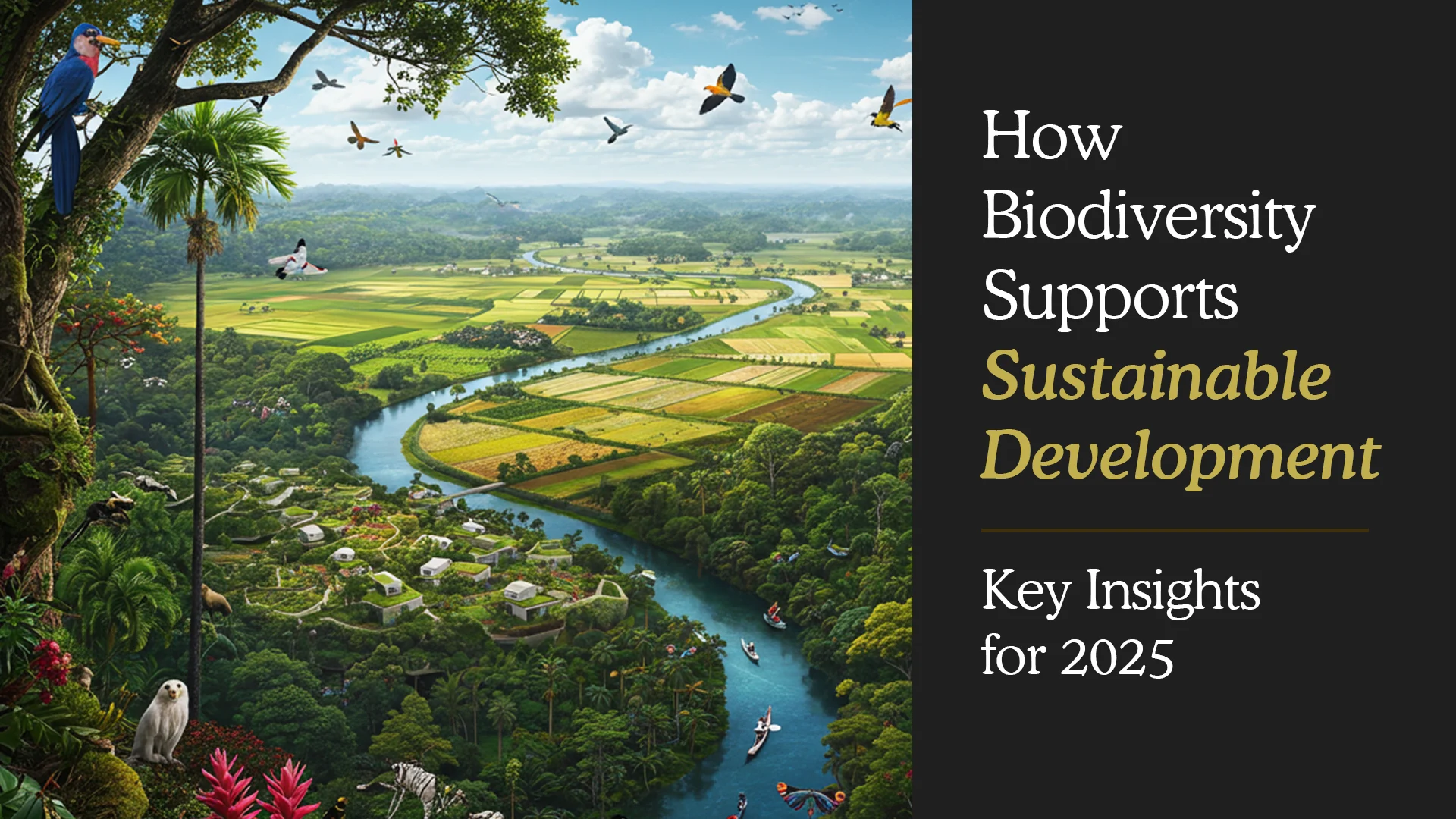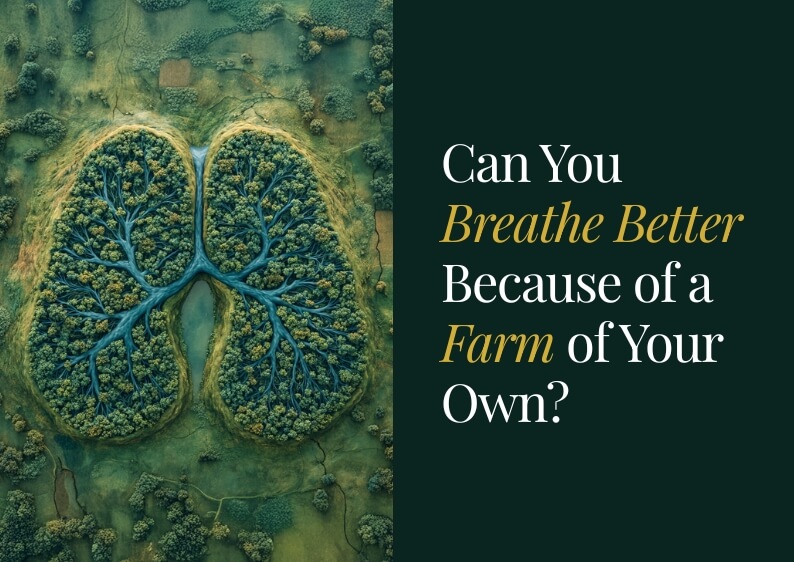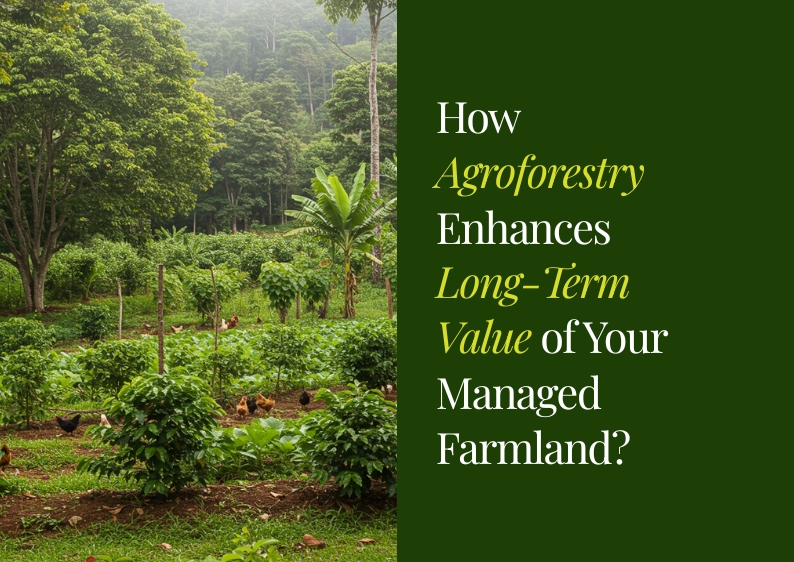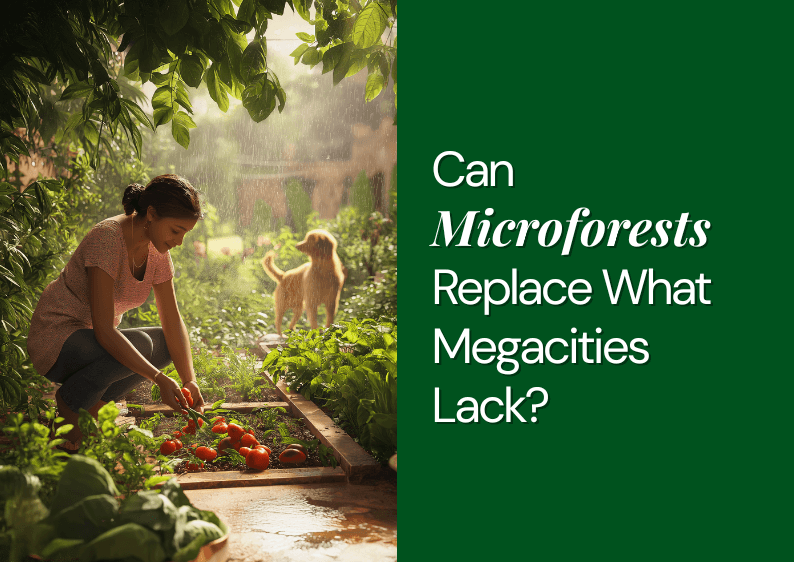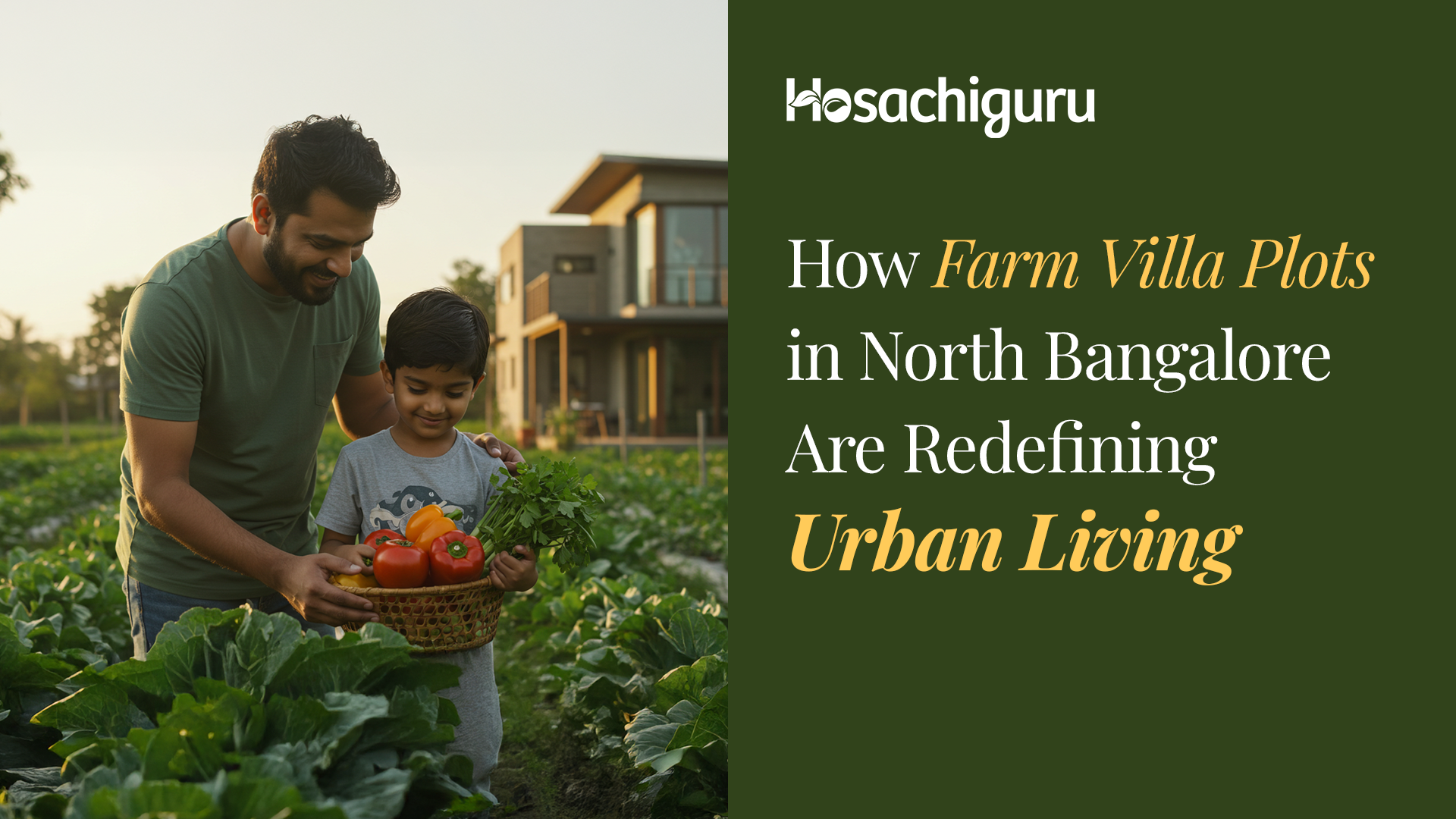May 8, 2023
Author: Srinivas Abhilash
International Compost Awareness Week
2023 Theme – For Healthier Soil, Healthier Food…Compost!
Introduction
Soil is the medium of our food system, and our food system is the foundation of our civilization. Without soil, we cannot produce the crops and livestock that sustain us. However, modern agriculture has degraded soil health, threatening our food security and civilization. To create a sustainable and resilient food system, we must prioritize soil health through sustainable farming practices.
The Power of the Soil Microbiome
The soil beneath our feet is a complex ecosystem that sustains life on our planet. Microorganisms such as bacteria, fungi, and protozoa live in the soil and work together to break down organic matter, release nutrients, and create a healthy environment.
The power of our soil microbiome extends far beyond just the health of our plants; research has shown that a healthy soil microbiome can help mitigate climate change by sequestering carbon in the soil, improving water quality by filtering pollutants, and reducing the risk of soil erosion. However, the condition of the soil has a direct impact on the well-being of all living organisms on Earth, including humans.
Soil Vs Dirt
Healthy soil is essential for the growth and survival of plants and animals, as it is full of life and nutrients. In contrast, dirt is a lifeless and barren substance that is the result of neglect and abuse, reminding us of the damage we’ve done to the planet.
The Importance of Soil Health
The health of the soil is critical for sustaining healthy ecosystems, providing the foundation for plant growth, and supporting the food chain. When soil is degraded or contaminated, it can lead to reduced agricultural productivity, loss of biodiversity, and negative impacts on human health.
Soil Health = Human Health: Why Topsoil is Vital for Our Well-being
Our soil is in crisis. We lose 24 billion tons of topsoil every year, equivalent to 3.3 tons per person, causing crop failures, food shortages, and famine. Over 800 million people suffer from chronic hunger, and this number will only increase as topsoil degradation persists. This isn’t just an environmental issue; it’s a humanitarian crisis. Our soil is the foundation of all life, and we must act now to protect it.
Composting and Earthworms: Building Top Soil
Composting – a gardener’s and a farmer’s best friend! It’s a fantastic way to give the soil a much-needed boost, by adding the organic matter that plants crave. Not only does it provide essential nutrients for plant growth, but it also helps retain moisture in the soil, making it perfect for a healthy and thriving garden.
Now let’s talk about earthworms – the superheroes of the soil! They may seem like slimy creatures, but they are essential to farmers and gardeners alike. Earthworms work tirelessly to transform soil structure, and with a single worm capable of moving up to six tons of soil per acre each year, they’re little powerhouses! But that’s not all – they’re also excellent composters. By ingesting soil and organic matter, they create nutrient-rich castings that promote plant growth. Their burrowing action creates channels in the soil, which improves water infiltration, allowing roots to grow and take up essential nutrients. Thanks to these little creatures, farmers can see up to a 10-ton increase in castings per acre each year, leading to healthier soil and more bountiful crops. By supporting earthworm populations through sustainable agricultural practices, we can help build healthy topsoil and promote the health of our planet.
“Reviving the Earth: Hosachiguru’s Journey to Healthier Soil”
Steps taken at Hosachiguru to build Healthier Soil
- No-till farming is a game-changer for regenerative and sustainable agriculture. By minimizing soil disturbance, this innovative farming method slows down evaporation, enabling rainwater to be better absorbed and irrigation efficiency to be increased. The result? Lush crops and more efficient use of resources. It’s like a yoga retreat for the soil, giving it time to rejuvenate and breathe.
- Hosachiguru avoids using heavy machinery equipment, instead using tractor-mounted mulchers like the Cubcadet Mulching, to manage crop residues and maintain soil structure. It’s like getting a gentle massage instead of a rough one – the soil is happy and healthy.
- But wait, there’s more! Biomass planting is another technique used by Hosachiguru. Ground staff plants trees and other perennial crops that not only help build soil fertility but also sequester carbon from the atmosphere. So it’s a win-win for the environment and crops alike.
- Mulching is another fundamental technique that farm staff at Hosachiguru use to maintain soil health. We use both green and brown mulch, which is a mix of grass, leaves, twigs, and crop residues. Not only does mulching regulate soil temperature, but it also retains moisture and suppresses weed growth. It’s like a protective blanket that keeps the soil cozy.
- Crop rotation is another important technique Hosachiguru employs. By alternating the crops grown on a particular plot of land each season, we are able to prevent soil nutrient depletion and reduce the build-up of pests and diseases. It’s like a fun game of musical chairs, but with crops!
- Next comes Composting. Ground staff (Sr. Agronomists, Jr. Agronomists, Farm Supervisors) at various Hosachiguru farms regularly add organic waste like kitchen scraps and agricultural waste to the soil, which enriches it with nutrients and enhances its structure. It’s like giving the soil a delicious meal that will nourish it for years to come.
- Hosachiguru also uses carbon materials like biochar, dry wood chips, crop residues, and dry leaves to improve soil fertility and structure. And let’s not forget about vermicomposting, where the use of earthworms enables organic waste to break down and produce nutrient-rich compost. It’s like a fancy spa treatment for the soil.
- In addition to all these techniques, Hosachiguru also inoculates the soil with liquid microbial cultures like Waste Decomposer/EM1 Solution to promote the growth of beneficial microorganisms. It’s like a probiotic supplement for the soil, keeping it healthy from the inside.
- Last but not least, Hosachiguru uses land and water management practices to prevent soil erosion and flooding. The brilliant use of techniques like the creation of trenches, swales, bio-swales, etc, is a strong step towards topsoil conservation which also ensures that water moves along the slope of the land and doesn’t cause any damage. It’s like building a moat around a castle, protecting the precious crops and soil within.
“Sowing the Seeds of a Brighter Future: Hosachiguru’s Approach to Cultivating Healthy Food Forests”
Various Ways Hosachiguru Ensures Healthy Food Forests are Grown
Imagine walking through a thriving food forest where every plant, every tree, and every creature is in perfect harmony with its surroundings. At Hosachiguru, we are on a mission to create just that, and we do it with a contagious passion.
Our secret? Regenerative farming practices that go beyond sustainability and prioritize diversity, resilience, and health. We believe that every living being, from the smallest microbe to the tallest tree, has a crucial role to play in the ecosystem, and we work tirelessly to ensure that each one thrives.
We are obsessed with soil health management, which means that we take every measure to enrich the soil with nutrients and enhance its structure through practices such as composting, mulching, and no-till farming. We also keep a watchful eye on the water table, ensuring that our farming practices never deplete or pollute this precious resource.
At Hosachiguru, we don’t just grow food; we create ecosystems that are vibrant, self-sustaining, and resilient. We plant trees and other perennial crops alongside annual crops, creating a thriving agroforestry system that benefits not just our crops but also the wildlife that calls our farms home. We foster symbiotic associations between plants and microbes, which help increase nutrient uptake and boost plant growth.
Cultivating Abundance: How Hosachiguru is Growing Natural Food Forests with Permaculture Principles
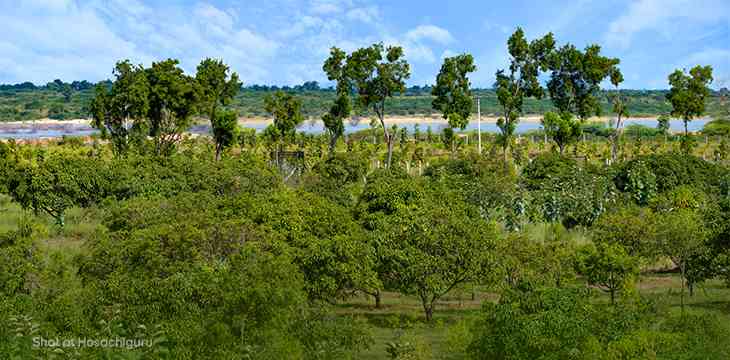
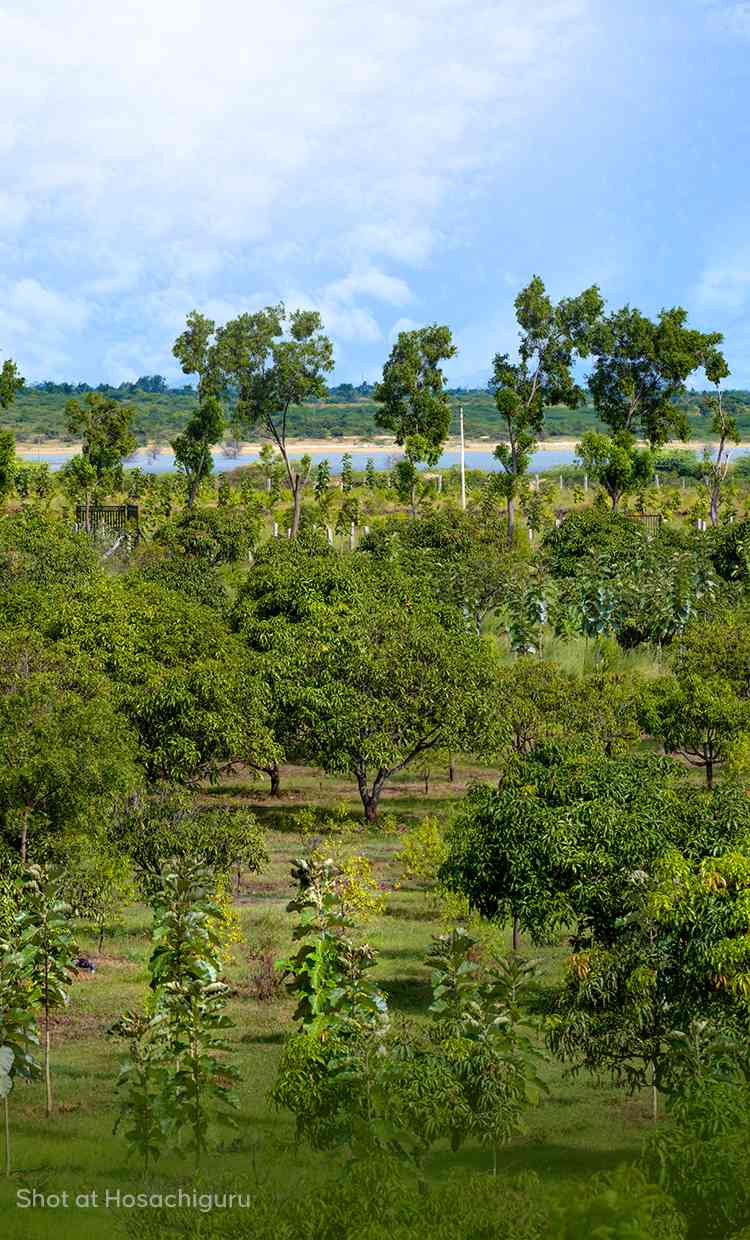
At Hosachiguru’s managed farmlands, we don’t just work with nature; we dance with it! It’s all about tapping into the rhythms and patterns of the natural world, so we can create abundance sustainably and harmoniously. From observing the land to catching and storing energy, our methods are both innovative and practical. Our co-farmers take pride in harvesting their produce, ensuring they get fresh, healthy, and sustainable food that’s transparent and traceable. Plus, with self-regulation and feedback, we’re constantly evolving and improving our methods.
We aim to be a beacon of sustainability, valuing renewable resources and creating closed loops that eliminate waste. And, when it comes to design, we start with the patterns and work our way to the details, creating a layout that not only saves time and effort but also fosters a deep connection to the environment around us.
At Hosachiguru’s managed farmlands, diverse plantations increase microbial diversity and offer Co-Farmers varied yields at various times of the year. Also, all farm plots are defined with diverse and productive edge zones as borders, planting a mix of sun-loving and shade-tolerant plants together with medicinal plants as part of the garden design.
Composting At Hosachiguru
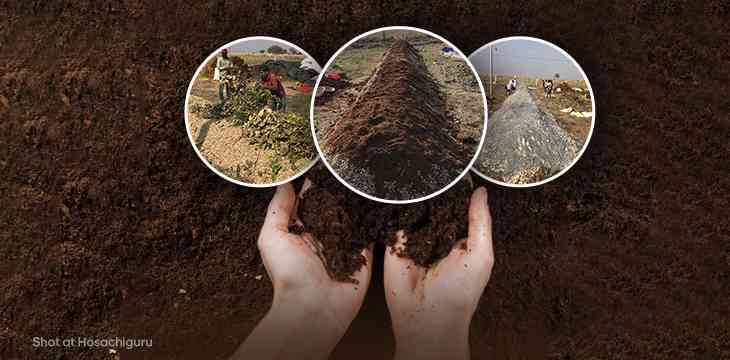
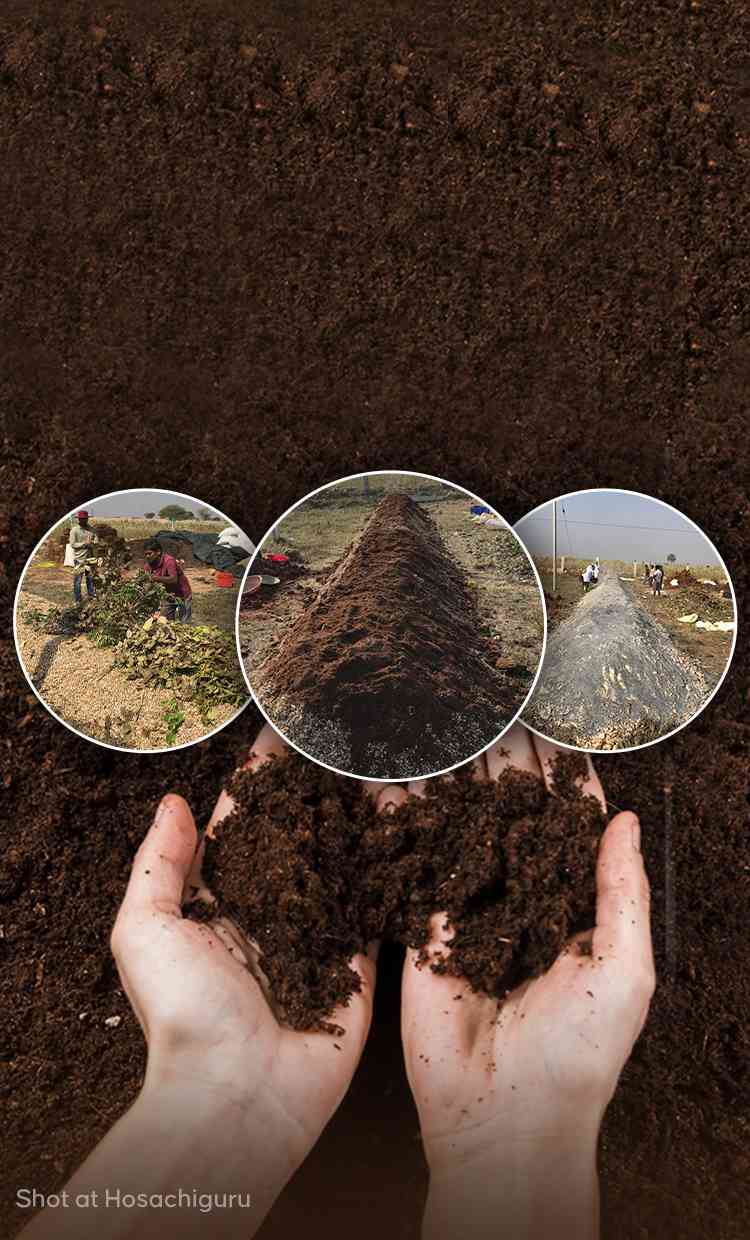
Composting is not just a simple act of disposing of organic waste. It’s a crucial step in creating healthier soil and producing healthier food. Composting not only helps reduce the amount of waste that ends up in landfills but also enhances soil fertility, promotes biodiversity, and conserves water. By composting, we give back to the earth, enriching it with nutrients that will help grow healthier and more robust crops. It’s a small but powerful step towards building a more sustainable and resilient future for ourselves and generations to come. Let’s compost and nourish the soil that nourishes us!
- At Hosachiguru, we don’t just compost; we orchestrate an epic symphony of soil-building! With every heap and bed, we create a masterpiece that’s both sustainable and nourishing. Our method is simple, yet effective, with eight layers of organic goodness that create a nutrient-rich environment for our plants to thrive in.
- Starting with forest soil, we build a foundation of natural goodness that’s followed by dry and green mulch, adding vital carbon and nitrogen to the mix. Then we layer in farmyard manure, adding rich, organic matter that’s full of beneficial microbes. The next step is wood ash, which helps balance pH levels and adds essential minerals to the mix.
- But we’re not done yet! We also add rock phosphate, a natural fertilizer that’s packed with phosphorous, which is essential for healthy root development. And to top it off, we layer in more farmyard manure and forest soil, creating a harmonious blend of organic matter that’s sure to make any plant lover’s heart sing.
- To ensure that our compost is in perfect harmony, we water it twice a day, allowing it to soak up all the goodness and start breaking down. And after just one month, we give it a little flip, and voila – compost magic! In just 45-70 days, we’ve created a nutrient-rich, soil-building masterpiece that’s ready to help our plants thrive.
Conclusion
As Wendell Berry rightly said in the book, The Unsettling of America: Culture and Agriculture, Soil is the great connector of life. The source and destination of all. It is the healer, restorer, and resurrector by which diseases pass into health, age into youth, and death into life. Without proper care for it, we can have no community, and without proper care for it, we can have no life.
By adopting sustainable practices like composting, we are contributing to healthier soil, a healthier planet, and a better future for generations to come. At Hosachiguru, we believe that healthy soil is the foundation of a healthy ecosystem, and composting is a crucial step toward achieving that goal.
So let’s embrace the power of composting and work towards creating a greener and more sustainable world, one compost heap at a time! Join us on this journey of soil-building, and together, we’ll create a greener, healthier world for generations to come.







